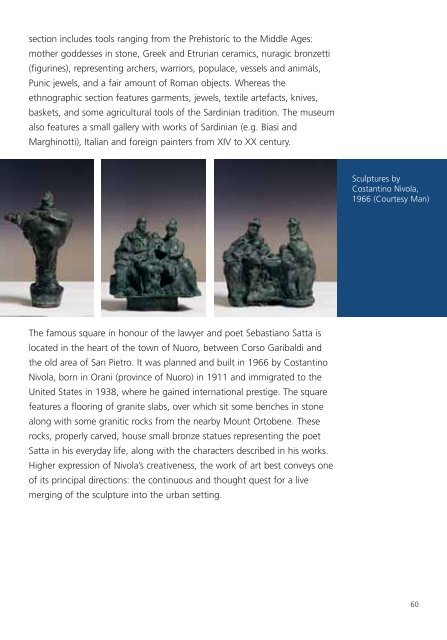Create successful ePaper yourself
Turn your PDF publications into a flip-book with our unique Google optimized e-Paper software.
section includes tools ranging from the Prehistoric to the Middle Ages:<br />
mother goddesses in stone, Greek and Etrurian ceramics, nuragic bronzetti<br />
(figurines), representing archers, warriors, populace, vessels and animals,<br />
Punic jewels, and a fair amount of Roman objects. Whereas the<br />
ethnographic section features garments, jewels, textile artefacts, knives,<br />
baskets, and some agricultural tools of the Sardinian tradition. The museum<br />
also features a small gallery with works of Sardinian (e.g. Biasi and<br />
Marghinotti), Italian and foreign painters from XIV to XX century.<br />
Sculptures by<br />
Costantino Nivola,<br />
1966 (Courtesy Man)<br />
The famous square in honour of the lawyer and poet Sebastiano Satta is<br />
located in the heart of the town of Nuoro, between Corso Garibaldi and<br />
the old area of San Pietro. It was planned and built in 1966 by Costantino<br />
Nivola, born in Orani (province of Nuoro) in 1911 and immigrated to the<br />
United States in 1938, where he gained international prestige. The square<br />
features a flooring of granite slabs, over which sit some benches in stone<br />
along with some granitic rocks from the nearby Mount Ortobene. These<br />
rocks, properly carved, house small bronze statues representing the poet<br />
Satta in his everyday life, along with the characters described in his works.<br />
Higher expression of Nivola’s creativeness, the work of art best conveys one<br />
of its principal directions: the continuous and thought quest for a live<br />
merging of the sculpture into the urban setting.<br />
60
















